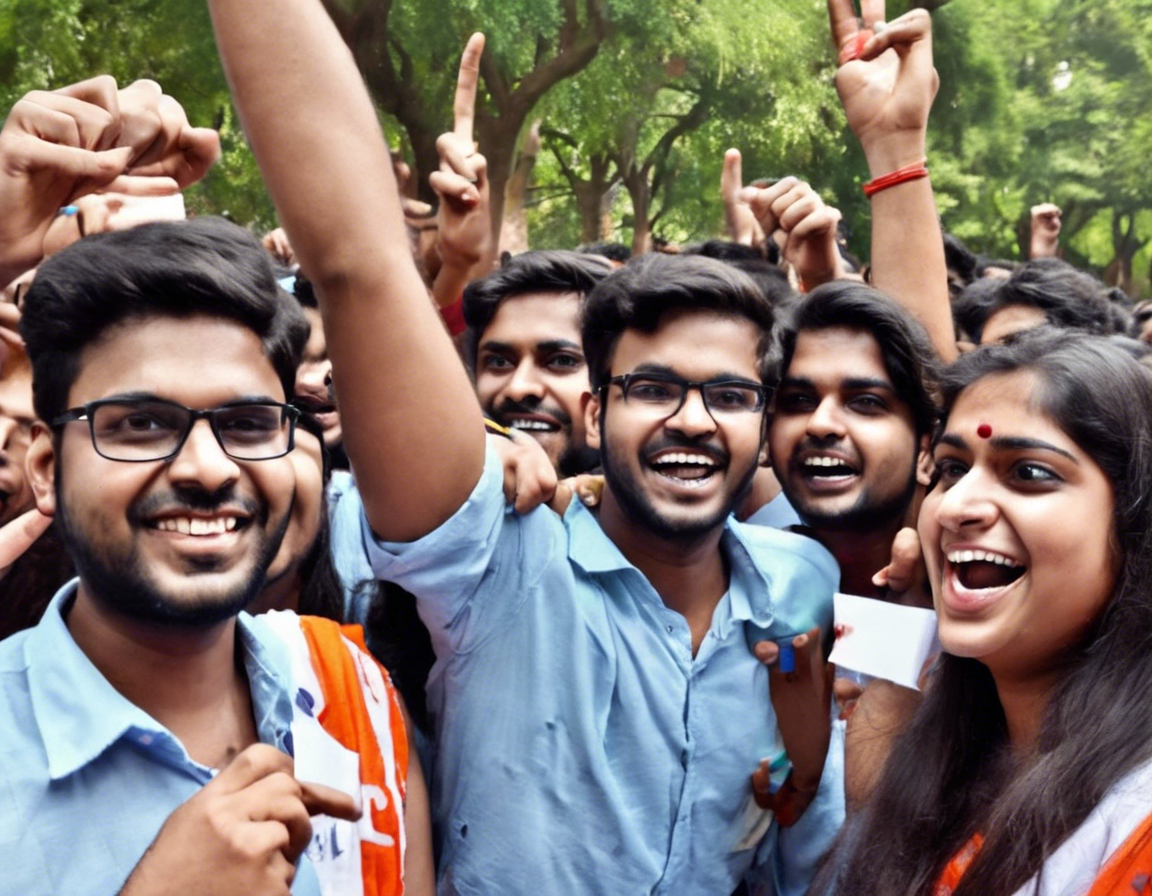The Delhi University Students’ Union (DUSU) elections serve as a barometer of student sentiments and political trends in one of India’s most prestigious universities. The results of these elections often capture widespread attention due to both their immediate significance for student governance and their broader implications for the political landscape in the country. In this post, we will delve into the intricacies of the DUSU election results, analyzing the key trends, factors, and outcomes that shape the political dynamics within the university campus.
Understanding the DUSU Election Process
Before delving into the election results, it is crucial to understand the election process itself. The DUSU elections are typically held annually, with students from various colleges affiliated with Delhi University participating in electing their representatives for the posts of President, Vice President, Secretary, and Joint Secretary. Student political outfits affiliated with national political parties such as the Akhil Bharatiya Vidyarthi Parishad (ABVP), National Students’ Union of India (NSUI), All India Students Association (AISA), and Students’ Federation of India (SFI) actively participate in these elections, making it a hotbed of political activity.
Key Players and Political Affiliations
One of the critical aspects of the DUSU election results is the dominance of certain student political outfits over the years. The ABVP, associated with the ruling Bharatiya Janata Party (BJP), and the NSUI, affiliated with the Indian National Congress, have traditionally been the two primary contenders in these elections. However, in recent years, left-leaning outfits like AISA and SFI have also emerged as significant players, especially in colleges where progressive ideologies resonate with the student population.
While the ABVP has historically maintained a stronghold over the DUSU, the NSUI has also seen periods of resurgence, often capitalizing on anti-incumbency sentiments or broader political developments at the national level. The left parties, AISA and SFI, have a smaller but committed base, particularly among students inclined towards socialist ideologies and progressive politics.
Trends in the Latest DUSU Election Results
In the most recent DUSU elections, held amidst the backdrop of heightened political polarization and student activism, several noteworthy trends emerged that shaped the outcomes. Here are some key takeaways from the latest election results:
1. Increased Voter Turnout
- The latest DUSU elections witnessed a significant rise in voter turnout, indicating heightened student engagement and interest in campus politics. This surge in participation reflected a growing awareness among students regarding the impact of student politics on campus life and broader societal issues.
2. Shifts in Power Dynamics
- While the ABVP has historically dominated the DUSU, the latest elections saw a more evenly contested battle with the NSUI making significant inroads in several key colleges. This shift signaled a potential reconfiguration of power dynamics within the university, challenging the hegemony of the ruling party’s student wing.
3. Emergence of Alternative Voices
- A notable trend in the recent election results was the increased visibility of alternative voices represented by left-leaning outfits like AISA and SFI. These parties managed to secure victories in certain colleges, signaling a growing appetite for progressive and anti-establishment ideologies among the student electorate.
4. Impact of National Politics
- The DUSU election results often reflect the ebb and flow of national political trends, with students aligning themselves based on the broader ideological currents shaping the country. Issues at the national level, such as social justice, economic policies, and freedom of expression, often find resonance in the campus politics of Delhi University.
Factors Influencing DUSU Election Results
Several key factors influence the outcome of DUSU elections, ranging from student demographics to broader political narratives. Understanding these factors is essential in deciphering the pulse of student politics within Delhi University. Here are some critical determinants:
-
Student Mobilization: The ability of student outfits to mobilize support, reach out to diverse student groups, and effectively communicate their ideological positions plays a crucial role in determining their electoral success.
-
Campaign Strategies: The effectiveness of campaign strategies, including social media outreach, campus rallies, and engagement with student issues, can sway undecided voters and consolidate support among existing backers.
-
National Context: Political developments at the national level, including policies of the central government, socio-economic issues, and cultural debates, often influence student preferences and voting patterns.
-
College Dynamics: Each college within Delhi University has its unique socio-political milieu, with factors like campus culture, academic trends, and historical allegiances shaping the electoral landscape.
FAQs (Frequently Asked Questions)
1. When are DUSU elections typically held?
- DUSU elections are usually held annually, with the exact timing varying each year. They are typically scheduled at the beginning of the academic session.
2. How are the office-bearers of DUSU elected?
- Students from affiliated colleges vote to elect representatives for the posts of President, Vice President, Secretary, and Joint Secretary.
3. What are the primary student political outfits contesting in DUSU elections?
- The main contenders are the ABVP, NSUI, AISA, and SFI, representing different ideological orientations.
4. What factors influence student voting behavior in DUSU elections?
- Factors such as ideology, campaign strategies, national politics, college dynamics, and student mobilization all impact voting patterns.
5. How do DUSU election results reflect broader political trends?
- The results of DUSU elections often mirror national political dynamics, offering insights into student reactions to central policies and ideological shifts.
In conclusion, the DUSU election results serve as a microcosm of the complex interplay between student aspirations, political ideologies, and national narratives. As a crucible of student activism and civic engagement, these elections offer a glimpse into the evolving landscape of Indian politics, where the voices and choices of young voters resonate far beyond the confines of university campuses.
